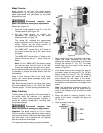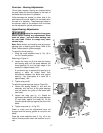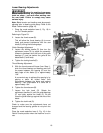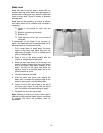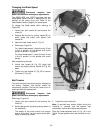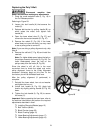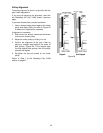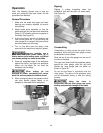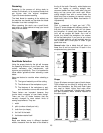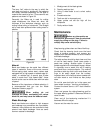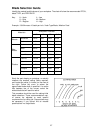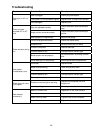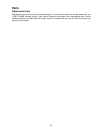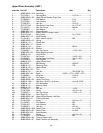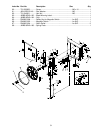
24
Operation
Note: The following Figures may or may not
show your particular band saw model, but the
procedures are identical.
General Procedure
1. Make sure the blade and upper and lower
bearings are properly adjusted for tension
and tracking.
2. Adjust blade guide assembly so that the
guide bearings are just above the workpiece
(about 3/16”) allowing minimum exposure to
the blade. See Figure 33.
3. If using the fence, move it into position and
lock it to the guide rail. If you are using the
miter gauge for a crosscut, the fence should
be moved safely out of the way.
4. Turn on the band saw and allow a few
seconds for the machine to reach full speed.
Whenever possible, use a
push stick, hold-down, power feeder, jig, or
similar device while feeding stock, to prevent
your hands getting too close to the blade.
5. Place the straightest edge of the workpiece
against the fence, and push the workpiece
slowly into the blade. Do not force the
workpiece into the blade.
When cutting, do not
overfeed the blade; overfeeding will reduce
blade life and may cause the blade to break.
6. When cutting long stock, the operator should
use roller stands, support tables, or an
assistant to help stabilize the workpiece.
Figure 33
Ripping
Ripping is cutting lengthwise down the
workpiece, and with the grain (of wood stock).
See Figure 34.
Figure 34
Crosscutting
Crosscutting is cutting across the grain of the
workpiece, while using the miter gauge to feed
the workpiece into the blade.
Slide the bar of the miter gauge into the end of
the slot on the table.
The right hand should hold the workpiece steady
against the miter gauge, while the left hand
pushes the miter gauge past the blade, as
shown in Figure 35.
Do not use the fence in conjunction with the
miter gauge. The offcut of the workpiece must
not be constrained during or after the cutting
process.
Using the fence in
conjunction with the miter gauge can cause
binding and possible damage to the blade.
Figure 35



